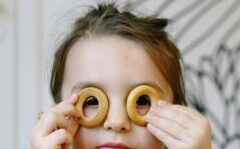The curriculum is not just a set of guidelines; it is a carefully crafted framework that nurtures a child’s innate curiosity and desire to learn. By integrating play-based learning with structured activities, educators can create an engaging environment where children feel safe to explore and express themselves. This approach not only fosters a love for learning but also helps children develop critical thinking skills and resilience as they navigate challenges. As they interact with peers and educators, children learn to communicate effectively, collaborate, and build meaningful relationships, all of which are essential for their overall development.
Early childhood education is vital for a child’s development. It sets the foundation for future learning and growth. Understanding curriculum, learning objectives, and milestones is essential for parents and educators alike.
In this article, we will explore these key components of early childhood education. We will also look at some insightful quotes that highlight its importance. Lastly, we will discuss the role of a materials buyer in the early childhood education industry.
Let’s delve into the world of early childhood education and its significant impact on young learners.
Early childhood education (ECE) plays a crucial role in the formative years of a child’s life. Understanding the curriculum, learning objectives, and developmental milestones can help parents, educators, and stakeholders ensure that children receive a well-rounded, quality education. This article will provide an overview of these critical components.
Curriculum
The curriculum in early childhood education is designed to promote holistic development, focusing on cognitive, social, emotional, and physical growth. Key areas typically include:
- Language and Literacy: Encouraging communication skills,
lexicon
- development, and early reading and writing.
- Mathematics: Introducing basic concepts such as numbers, patterns, and problem-solving.
- Science: Fostering curiosity about the natural world through observation and exploration.
- Social Studies: Teaching children about community, culture, and relationships.
- Arts: Promoting creativity through music, dance, and visual arts.
- Physical Education: Enhancing motor skills through activities and play.
Learning Objectives
Learning goals in early childhood education focus on reaching specific growth targets.
These objectives are typically categorized into several domains:
Cognitive Development
- Problem-Solving Skills: Encouraging children to think critically and solve problems
alone
- Memory and Concentration: Activities designed to improve attention span and recall.
Social and Emotional Development
- Self-Awareness: Helping children understand their own emotions and how to express them
suitably
- Social Skills: Teaching cooperation, sharing, and empathy towards others.
Physical Development
- Fine Motor Skills: Activities that develop hand-eye coordination and dexterity, such as drawing and cutting.
- Gross Motor Skills: Encouraging physical activities like running, jumping, and climbing to enhance overall physical health.
Developmental Milestones
Developmental milestones are specific skills or behaviors that most children can do at a certain age. These milestones help track a child’s progress and identify any areas needing additional support.
Infants (0-12 months)
- Cognitive: Recognizes familiar faces, responds to name.
- Social and Emotional: Shows fear of strangers, enjoys playing with parents.
- Physical: Rolls over, sits without support, begins to crawl.
Toddlers (1-3 years)
- Cognitive: Begins to sort shapes and colors, follows simple instructions.
- Social and Emotional: Shows defiant behavior, plays alongside other children.
- Physical: Walks
alone
- begins to run and climb.
Preschoolers (3-5 years)
- Cognitive: Understands the concept of counting, can retell a story.
- Social and Emotional: Cooperates with peers, shows a wide range of emotions.
- Physical: Dresses and undresses
by itself
- uses scissors.
Early childhood education is foundational for lifelong learning and development.
Understanding the curriculum, educational objectives, and key phases enables parents and teachers to assist children’s development and prepare them for academic achievement.
For parents, teachers, or stakeholders, being knowledgeable on these elements of ECE guarantees each child the chance to flourish.
If you have any questions or need further information, feel free to reach out or leave a comment below.



